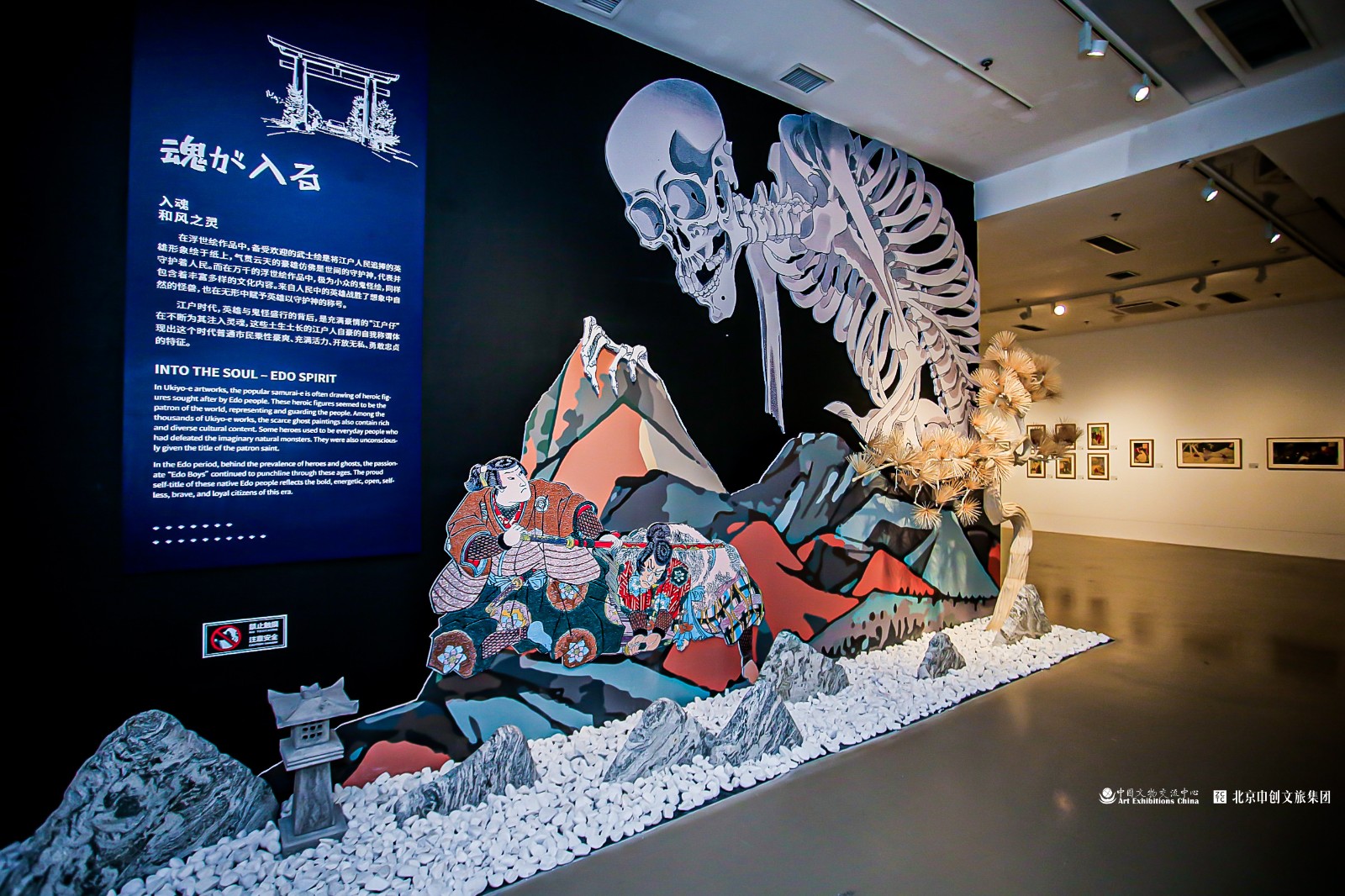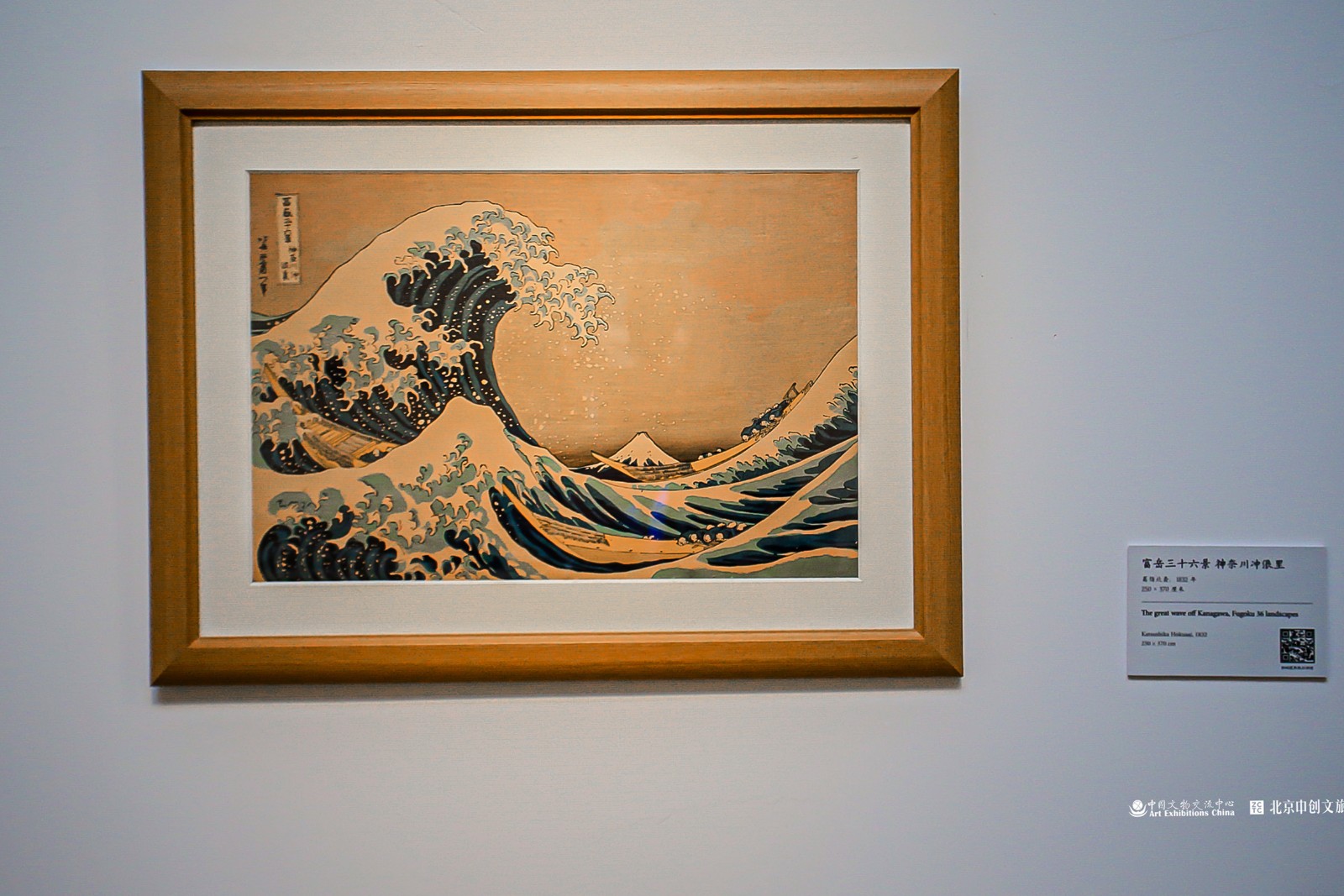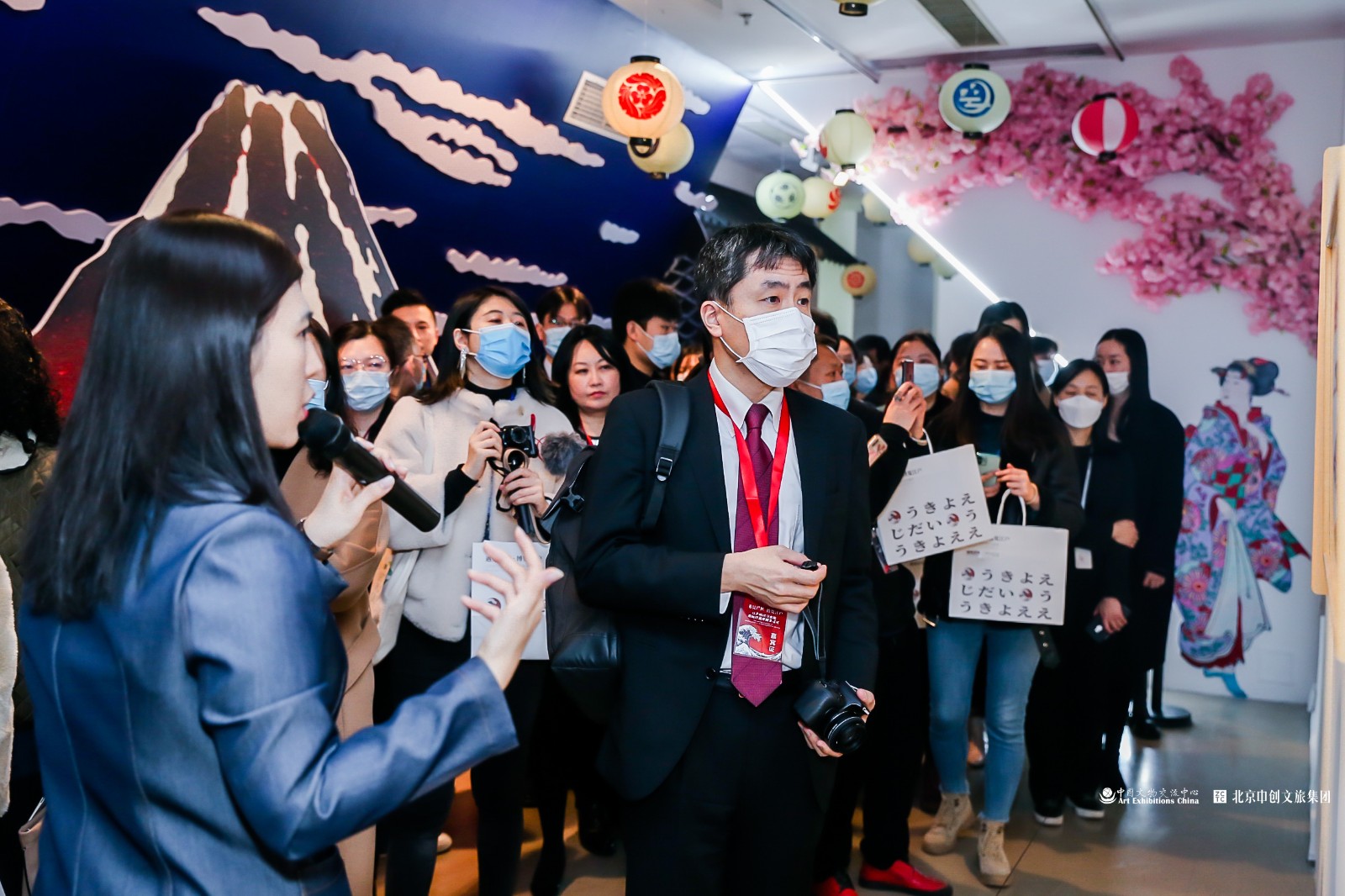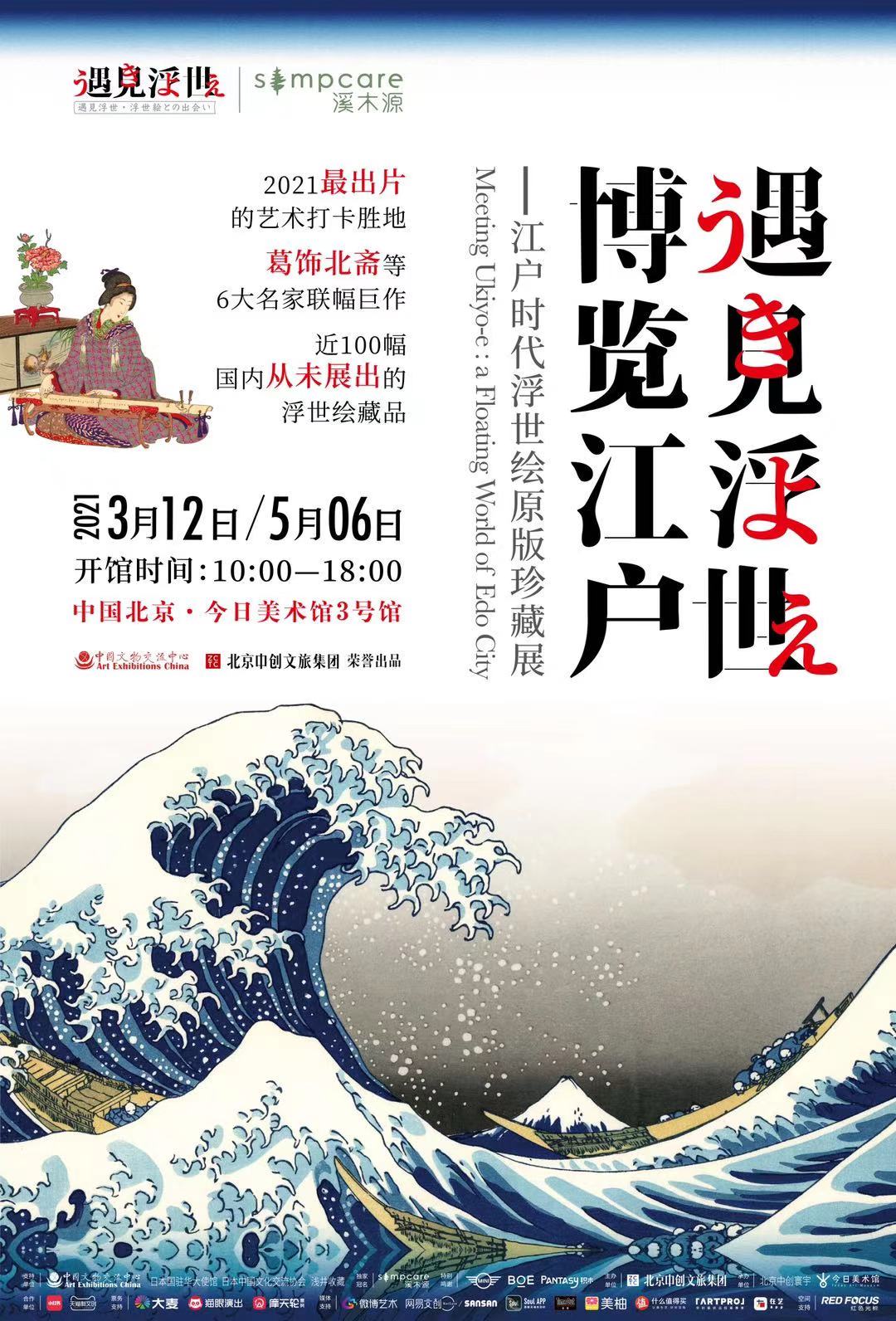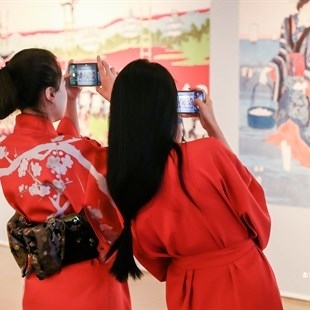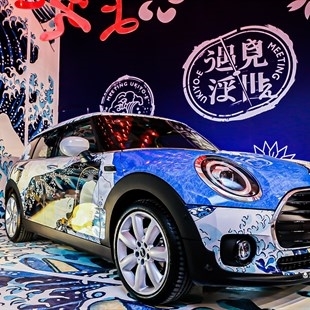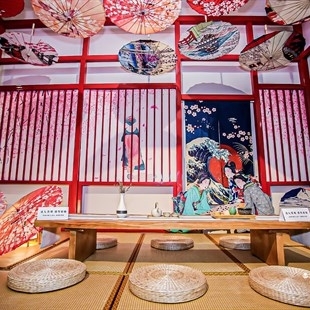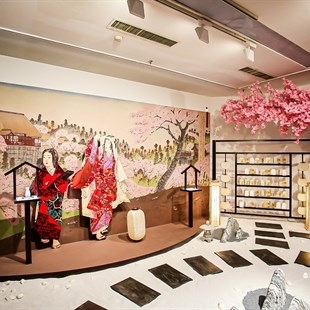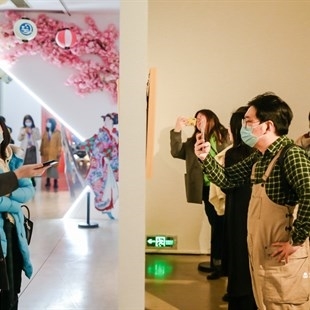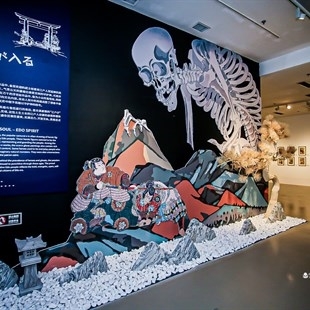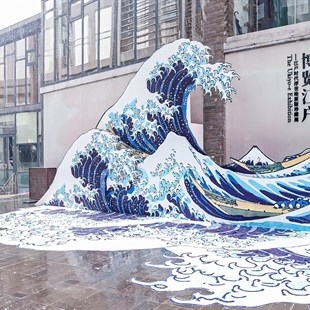Exhibition View of “Meeting Ukiyo-e a Floating World of Edo City", Photo by Art Exhibition China
Jointly produced by Art Exhibition China, the Embassy of Japan in China and China Cultural Tourism and Creativity, “Meeting Ukiyo-e: a Floating World of Edo City” showcases nearly 100 original Ukiyo-e artworks from the Edo Period (1603-1868) and Meiji Period (1868-1912) that are on display in China for the first time ever.
Ukiyo-e, (Japanese: “pictures of the floating world”) is regarded as one of the most important genres of art during the Tokugawa period (1603–1867) in Japan. Its style integrates the realistic narrative of the emaki (“picture scrolls”) produced in the Kamakura period with the mature decorative style of the Momoyama and Tokugawa periods. The common subjects of Ukiyo-e included famous courtesans and prostitutes, kabuki actors and well-known scenes from kabuki plays, and erotica.
"The Great Wave off Kanagawa," belongs to the series of "Thirty-Six Views of Mount Fuji." Photo by Art Exhibition China
The exhibition is divided into three sections of “Into the Town,” “Into the Room” and “Into the Soul,” in the aim of reflecting the social characteristics, customs, life and folklore of Japan during the Edo Period from the perspective of realistic experiences. One of the most recognized works in the exhibition is “The Great Wave off Kanagawa”, which belongs to the series of “Thirty-six Views of Mount Fuji” by Katsushika Hokusai (1760-1849). With a exquisite composition, “The Great Wave off Kanagawa” juxtaposes movement and stillness, near and far, is known to many outside Japan simply as the Great Wave, and has received praise worldwide, including that of painter Van Gogh and composer Debussy. The three ships tossed about by the waves are called oshiokuri-bune, which transported fresh fish and vegetables from Ise and Awa to markets such as Nihombashi via Edo Bay.
Naoto Ito, Counsellor of the Press and Culture Center of the Embassy of Japan in China, introduced the works. Photo by Art Exhibition China
Despite the influences of the pandemic, “The exhibition marks a new beginning for Chinese-Japanese cultural exchanges”, said Naoto Ito, Counsellor of the Press and Culture Center of the Embassy of Japan in China, at the opening ceremony, as “it is even difficult to see them in Japan and the exhibition provides a very good opportunity to get to know Japanese culture.”
The exhibition will remain on view at Today Art Museum till May 6, 2020.
Edited by CAFA ART INFO
Photo Courtesy of the Organizers
About the exhibition
Duration: March 12 to May 6, 2021
Opening hours: Tuesday to Thursday, Sunday: 10:00-18:00; Friday and Saturday: 10:00-21:00
Venue: Today Art Museum 3, Building 4, Apple Community, No. 32 Baiziwan Road, Chaoyang District, Beijing


